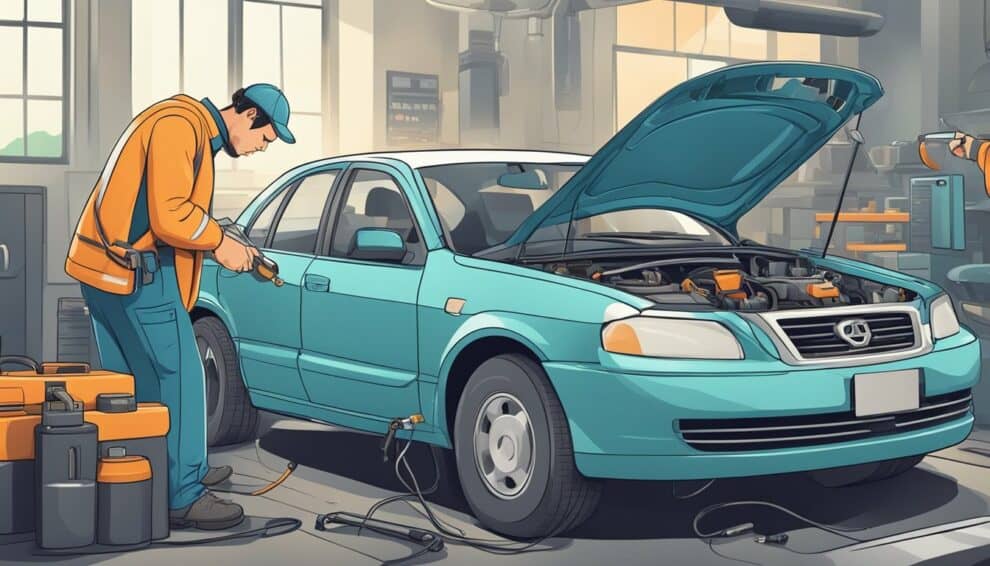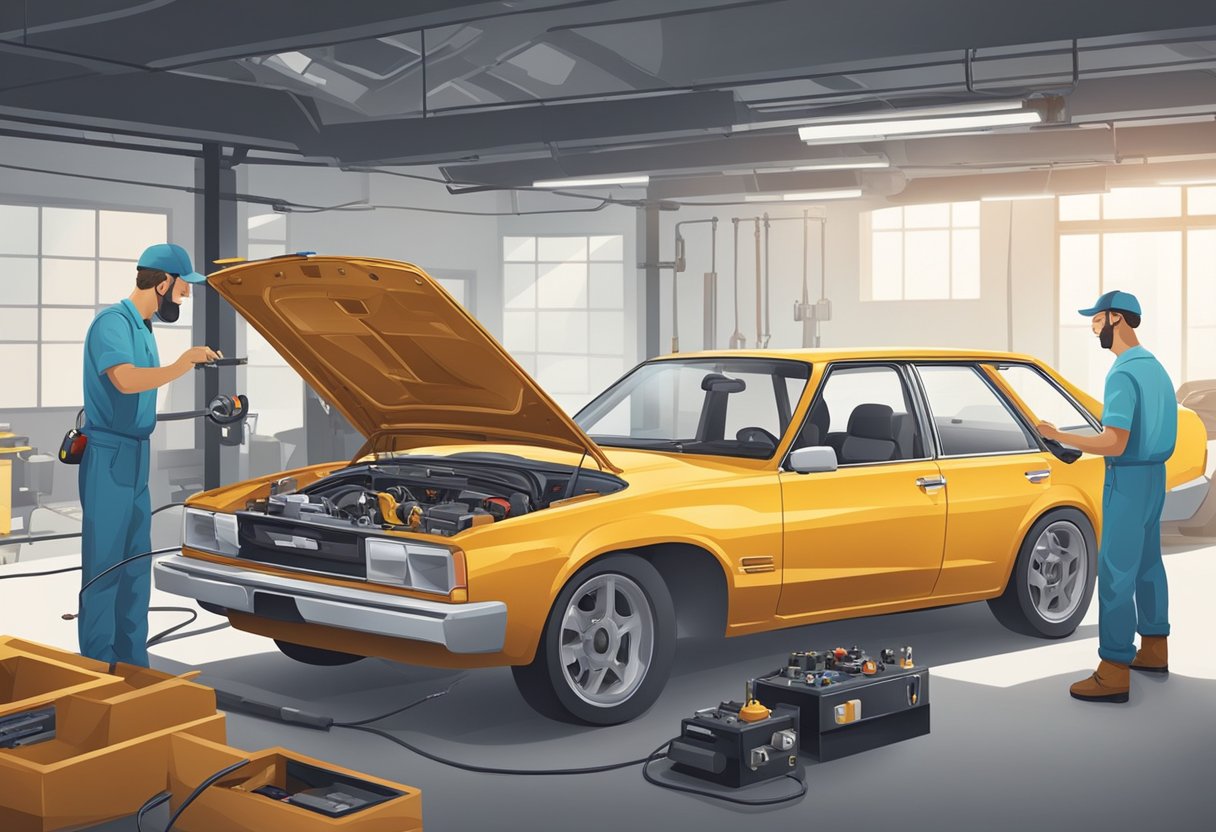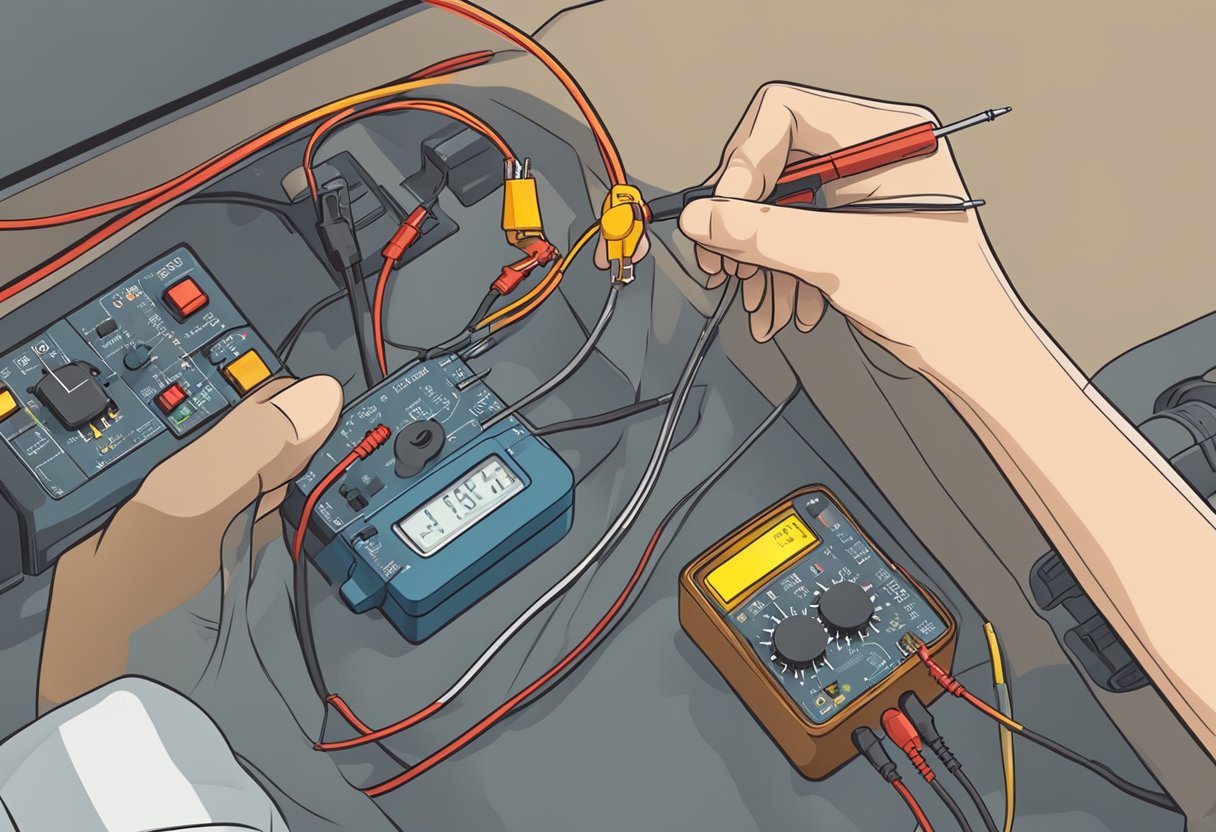If you’ve ever experienced problems starting your car, it’s possible that a faulty ignition relay is to blame.
Ignition relays are responsible for supplying power to the ignition system, which in turn starts the engine.
When an ignition relay fails, it can cause a range of symptoms that can be frustrating and potentially dangerous.
In this article, we’ll discuss some of the most common faulty ignition relay symptoms, and what you can do to recognize and respond to them.
One of the most obvious signs of a faulty ignition relay is a car that won’t start.
When you turn the key in the ignition, you may hear a clicking noise or nothing at all.
This can indicate that the relay is not sending power to the ignition system.
Another symptom of a faulty ignition relay is intermittent starting.
Your car may start one day and not the next, or it may start fine in the morning but have trouble starting in the afternoon.
These symptoms can be frustrating and can make it difficult to rely on your car for daily transportation.
In addition to starting problems, a faulty ignition relay can also cause other issues with your car’s electrical system.
For example, you may notice that your headlights or other electrical components are dimmer than usual, or that they flicker on and off.
This can be a sign that the relay is not sending enough power to these components.
Overall, recognizing the symptoms of a faulty ignition relay is important for keeping your car running smoothly and avoiding potential safety hazards on the road.
Identifying Faulty Ignition Relay Symptoms
When it comes to the ignition relay, it’s important to be able to recognize the symptoms of a faulty relay.
Ignition relay problems can cause a variety of issues, from engine stalling to complete failure to start.
Here are some of the most common symptoms of a faulty ignition relay:
Engine Stalling and Failure to Start
One of the most common symptoms of a faulty ignition relay is engine stalling or failure to start.
If your engine stalls or won’t start at all, it could be a sign that the ignition relay is failing.
This is because the relay is responsible for sending power to the engine’s ignition system.
If the relay is not functioning properly, the engine may not receive the power it needs to start.
Intermittent Ignition Function
Another common symptom of a faulty ignition relay is intermittent ignition function.
This means that the ignition system may work fine one moment, but then fail to start the engine the next.
If you notice that your ignition system is working inconsistently, it could be a sign that the relay is failing.
Unusual Noises from the Relay
Finally, another symptom of a faulty ignition relay is unusual noises coming from the relay.
If you hear clicking or buzzing noises coming from the relay, it could be a sign that the relay is failing.
This is because the relay is responsible for controlling the flow of electricity to the ignition system.
If the relay is not functioning properly, it may be making unusual noises as it tries to operate.
In conclusion, if you notice any of these symptoms, it’s important to have your ignition relay checked by a qualified mechanic.
Ignition relay problems can cause serious issues with your vehicle’s performance and safety, so it’s important to address them as soon as possible.
Understanding the Role of the Ignition Relay
If you’re experiencing issues with starting your vehicle, it could be due to a faulty ignition relay.
The ignition relay plays a crucial role in the starting process of your vehicle.
It’s responsible for sending an electrical signal to the starter motor, which then cranks the engine to start the vehicle.
Electrical Pathway for Starter Motor
The ignition relay is essentially a switch that controls the flow of electricity to the starter motor.
When you turn the key in the ignition, the relay receives a signal from the ignition switch, which then sends power to the starter motor.
The starter motor then turns the engine over, allowing it to start.
Power Distribution to Essential Components
In addition to sending power to the starter motor, the ignition relay also plays a role in distributing power to other essential components of your vehicle.
This includes the fuel pump, ignition coil, and other electrical components that are necessary for your vehicle to start and run properly.
Without a functioning ignition relay, your vehicle won’t be able to start.
If you’re experiencing any symptoms of a faulty ignition relay, such as difficulty starting your vehicle, it’s important to have it diagnosed and repaired as soon as possible to prevent further issues.
Diagnostic Steps for Ignition Relay Issues
If you suspect your vehicle has a faulty ignition relay, there are several diagnostic steps you can take to confirm the issue.
Here are three common methods to help you identify the problem:
Visual Inspection
The first step in diagnosing an ignition relay issue is to visually inspect the relay itself.
Check for any signs of damage or wear, such as cracks, corrosion, or loose connections.
If you notice any of these issues, it’s likely that the relay needs to be replaced.
Relay Testing with Multimeter
To perform a more thorough diagnostic test, you can use a multimeter to test the ignition relay.
Start by turning off the vehicle and removing the relay from its socket.
Set the multimeter to the continuity setting and touch the probes to the relay’s terminals.
If the multimeter beeps, it means that the relay is functioning properly.
If it doesn’t beep, the relay is likely faulty and needs to be replaced.
Bench Testing Procedures
Another method for testing the ignition relay is to perform a bench test.
This involves removing the relay from the vehicle and connecting it to a power source and a ground.
Then, use a multimeter to test the relay’s resistance and continuity.
If the relay fails any of these tests, it’s likely that it needs to be replaced.
By following these diagnostic steps, you can identify and respond to faulty ignition relay symptoms.
Remember to always prioritize safety when working on your vehicle, and if you’re unsure about any steps in the diagnostic process, consult a professional mechanic.
How Do Faulty Ignition Relays Contribute to Random Cylinder Misfires?
Faulty ignition relays can lead to random cylinder misfires in a car’s engine. When the ignition relay fails, it can interrupt the electrical signal to the spark plugs, causing misfires. To diagnose this issue, follow these tips for diagnosing cylinder misfire: check the ignition relay, inspect the spark plugs, and test the fuel injectors.
Responding to Ignition Relay Failure
If you suspect that your ignition relay is faulty, it’s essential to take immediate action to avoid being stranded.
Here are some steps you can take to respond to ignition relay failure:
Immediate Measures
-
Turn off all electrical components: If you notice any signs of ignition relay failure, such as the engine not starting, turn off all electrical components such as the headlights, radio, and air conditioning.
This will prevent further battery drain and minimize the risk of a complete battery failure.
-
Check the battery: If the engine doesn’t start, check the battery’s voltage with a multimeter.
If the voltage is low, it may be the cause of the problem.
You can try jump-starting the car or charging the battery to see if that solves the issue.
-
Inspect the ignition system: If the battery is not the problem, inspect the ignition system.
Look for loose connections, damaged wires, and other signs of wear and tear.
If you notice any issues, try to fix them or take your car to a mechanic.
Long-Term Solutions
-
Replace the ignition relay: If you have determined that the ignition relay is the problem, it’s best to replace it.
A new relay will ensure that the electrical system works correctly, and you won’t have to worry about being stranded.
-
Regular maintenance: Regular maintenance of your car’s electrical system can prevent ignition relay failure.
Make sure to keep your battery charged, replace damaged wires, and check the connections regularly.
By taking these steps, you can respond to ignition relay failure promptly and prevent further damage to your car’s electrical system.
Remember to stay calm and seek professional help if you’re unsure about how to proceed.
Preventive Practices and Maintenance Tips
To prevent ignition relay failure, it is important to perform regular maintenance on your vehicle.
Here are some preventive practices and maintenance tips to keep your ignition relay in good condition:
-
Check your battery regularly: A weak battery can put extra strain on the ignition relay, causing it to fail.
Check your battery voltage regularly and replace it if necessary.
-
Inspect wiring and connections: Loose or corroded connections can cause voltage drops, which can damage the ignition relay.
Inspect your wiring and connections regularly and clean or tighten them as needed.
-
Replace worn components: Worn components such as spark plugs, ignition wires, and distributor caps can cause the ignition system to work harder than it needs to, which can lead to relay failure.
Replace worn components according to your vehicle’s recommended maintenance schedule.
-
Use high-quality parts: Using high-quality parts can help prevent premature ignition relay failure.
Choose parts from reputable manufacturers and avoid cheap, low-quality components.
-
Keep your engine clean: A dirty engine can cause overheating, which can damage the ignition relay.
Keep your engine clean by regularly changing the oil and air filter, and by keeping the engine compartment free of debris.
By following these preventive practices and maintenance tips, you can help ensure that your ignition relay stays in good condition and avoid the inconvenience and expense of a failure.
As an Amazon Associate we earn from qualifying purchases.













